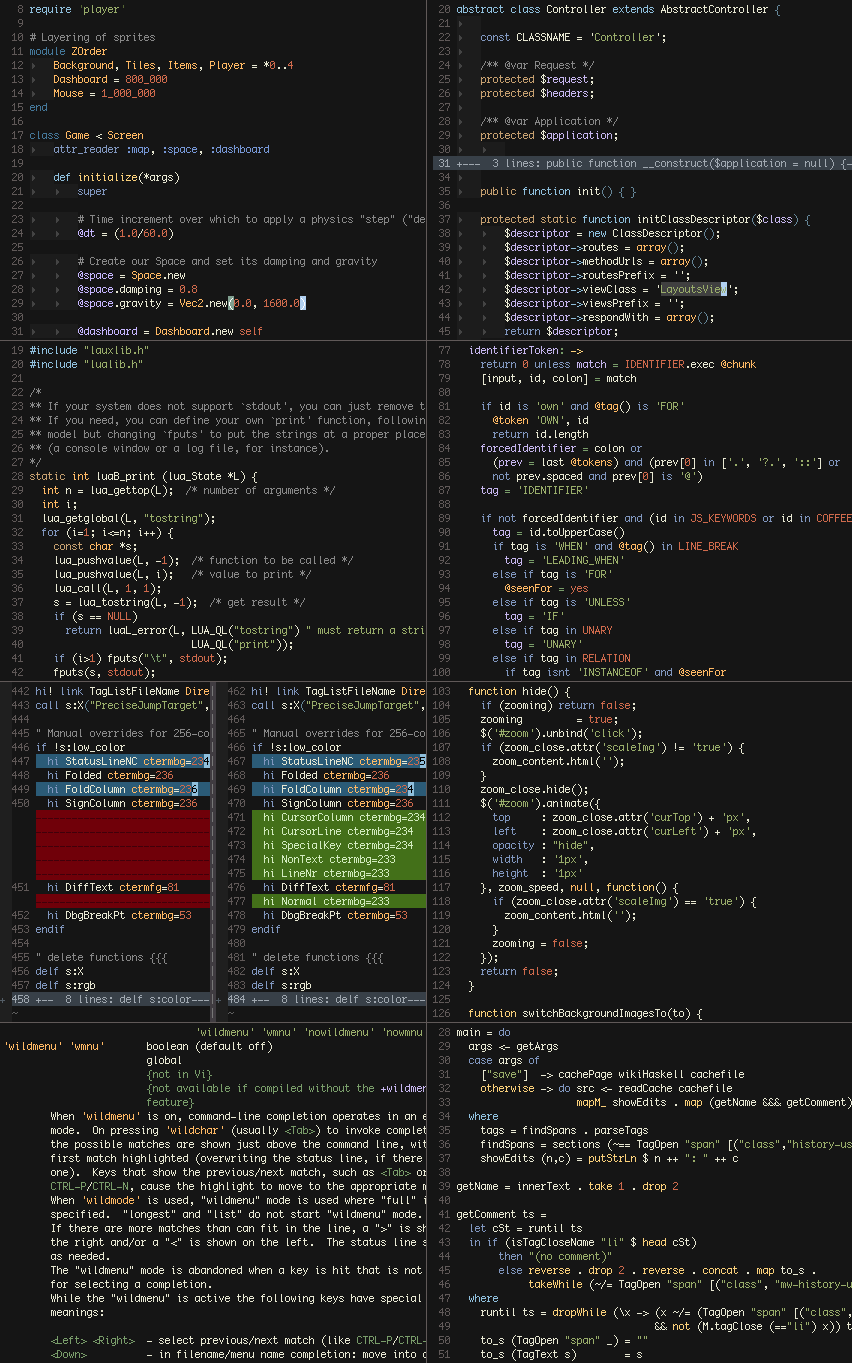A colorful, dark color scheme, inspired by ir_black and twilight.
Designed primarily for a graphical Vim, but includes support for 256, 88, 16,
and 8 color terminals. On a 16 or 8 color terminal, replace its colors with
those in ansi-term-colors.txt for best results.
This script is vimscript #2555 at Vim.org.
Scroll down for screenshots!
If you prefer slightly different colors from what Jellybeans defines,
you can set g:jellybeans_overrides in your .vimrc to a dictionary of
custom highlighting parameters:
let g:jellybeans_overrides = {
\ 'Todo': { 'guifg': '303030', 'guibg': 'f0f000',
\ 'ctermfg': 'Black', 'ctermbg': 'Yellow',
\ 'attr': 'bold' },
\ 'Comment': { 'guifg': 'cccccc' },
\}
This removes the need to edit Jellybeans directly, simplifying upgrades. In addition, RGB colors specified this way are run through the same color approximation algorithm that the core theme uses, so your colors work just as well in 256-color terminals.
If you can pick better colors than the approximator, specify them
in the 256ctermfg and 256ctermbg parameters to override
its choices.
To set a custom background color, override the special
background highlight group:
let g:jellybeans_overrides = {
\ 'background': { 'guibg': '000000' },
\}
Jellybeans uses the background color in multiple highlight
groups. Using the special background group overrides them all
at once.
This replaces g:jellybeans_background_color and
g:jellybeans_background_color_256 from Jellybeans versions
before 1.6.
If you would prefer to use your terminal's default background
(e.g. for transparent backgrounds, image backgrounds, or a
different color) instead of the background color that Jellybeans
applies, use this background override:
let g:jellybeans_overrides = {
\ 'background': { 'ctermbg': 'none', '256ctermbg': 'none' },
\}
Jellybeans disables italics in terminal Vim by default, as some terminals do other things with the text's colors instead of actually italicizing the text. If your terminal does fully support italics, add
let g:jellybeans_use_term_italics = 1
to your .vimrc to enable italics in terminal Vim.
If you don't want italics even in GUI Vim, add
let g:jellybeans_use_gui_italics = 0
Since the background on a dark terminal is usually black already, Jellybeans appropriates the black ANSI color as a dark grey and uses no color when it really wants black.
If you can’t or don’t want to change your terminal’s color mappings, add
let g:jellybeans_use_lowcolor_black = 0
to your .vimrc to render “black” text as Vim’s grey (ANSI white).
Users of Apple’s pre-10.7 Terminal.app can use the TerminalColours plugin (Leopard, Snow Leopard) to change the default colors.
The font in the screenshot is 10pt Monaco:
set guifont=Monaco:h10 noanti
